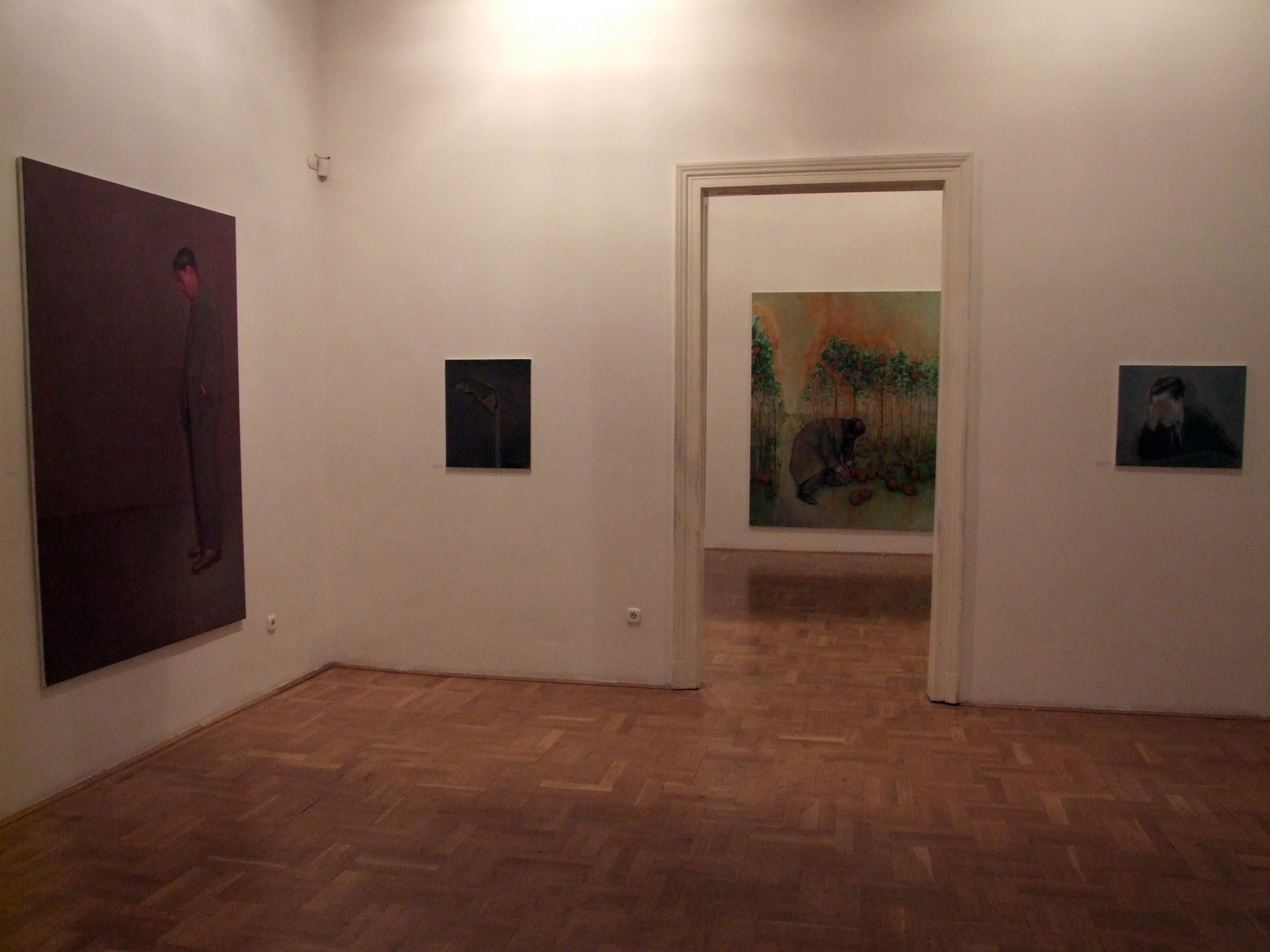Attila Szűcs
Looking for a found object
| Venue: | acb Gallery |
| Date: | Nov 14 2008 – Jan 03, 2009 |
Description
The concept behind Attila Szûcs’s art is that he does not use technology in an environment of technology (photography, film, video, digital multimedia), but sees the photo as the representative of the surface of reality, whereas his art reveals its deep structures. The means of this revelation – as we have seen – is painting. Paint is a malleable material, its usage is akin to alchemy. In the case of a painting, concentrating on the selected object is a special act, as the picture itself is a personal, human-sized surface. The seeming toollessness of painting covers a practically endless number of possible variations. The opposition of red and green has been present in Szûcs’s art since the aforementioned object. Many of his pictures are dominated by red or pink paired with different greens (beds, big golfer, girl fixing the telephones, assorting candies at night, three apples, kneeling figure with a mattress, reception, etc.). This pairing is created by sliding the colours from the world of the colour photographs representing reality, thus creating an effect as if we were peeking into spaces lit by colourful bulbs. On the other hand in the series with roses, a weighty, grave version of the same pairing appears supplemented by black contours. The reds of the paintings with the two beds or the caravan evoke images from David Lynch’s films. Based on the photo Szûcs paints a new, autonomous picture that reflects the narrative of the original photo. However, as we have seen, the act of painting, the correlation of the colours, therefore the conservation and exploitation of the capabilities of painting is an especially significant factor in Szûcs’s art. He reveals the rich referential systems – at least rich compared to those of his earlier pictures – of the new series by the restriction of these tools and the limited tools of his own style. Columbo, his new hero is a loser, but at the same time, an intellectual power borrowed from the mass media. Szűcs re-construct the still images taken from tv-screens in order to explore the deep structures of the scene.
